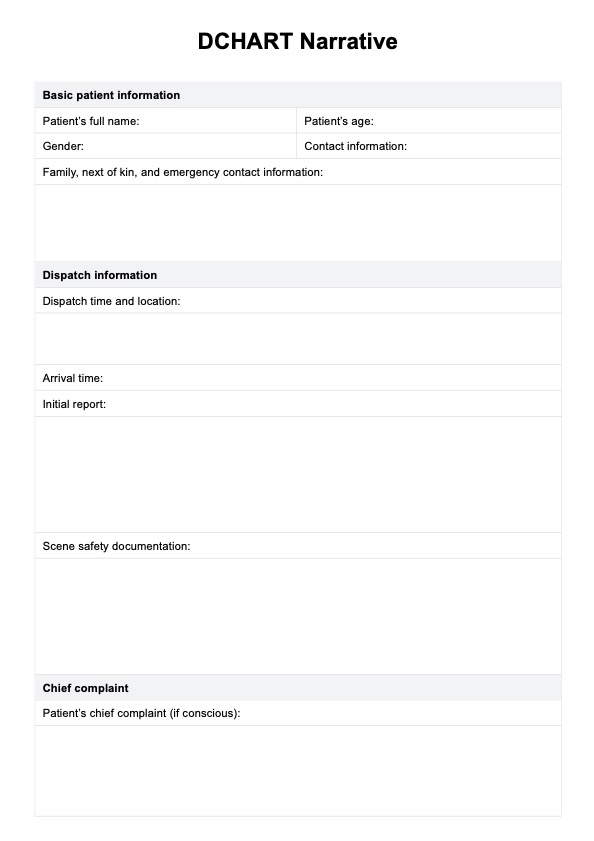EMS personnel use DCHART Narrative templates to document a patient's medical condition and provide necessary information for further treatment. These templates can be used for various purposes, such as patient handovers, hospital transfers, and incident reports.

DCHART Narrative
Get a free DCHART Narrative template and example in PDF format. Use this template to create effective EMS narratives.
Use Template
DCHART Narrative Template
Commonly asked questions
Yes, with Carepatron's customizable templates, you can easily edit and customize the DCHART Narrative templates to meet your specific needs. You can also save your customized templates for future use.
This template can help you save time and ensure accurate documentation of a patient's medical condition. It also provides a standardized format for reporting, making it easier for healthcare professionals to understand and interpret the information.
EHR and practice management software
Get started for free
*No credit card required
Free
$0/usd
Unlimited clients
Telehealth
1GB of storage
Client portal text
Automated billing and online payments











